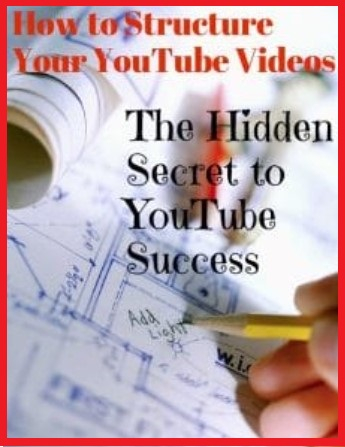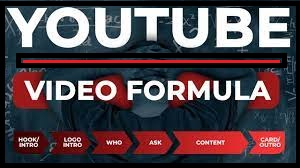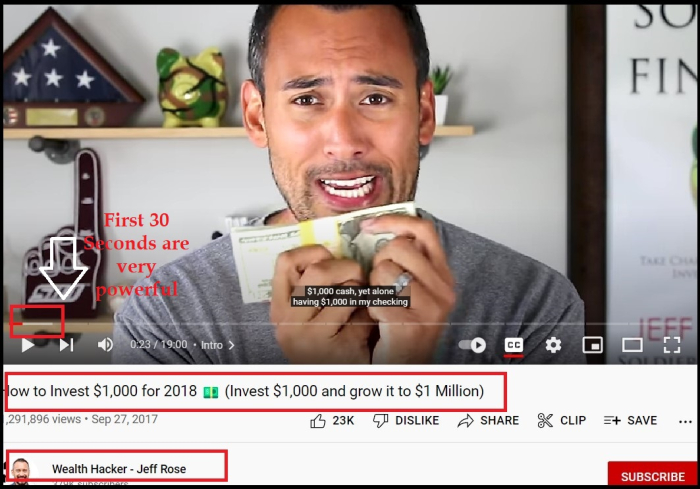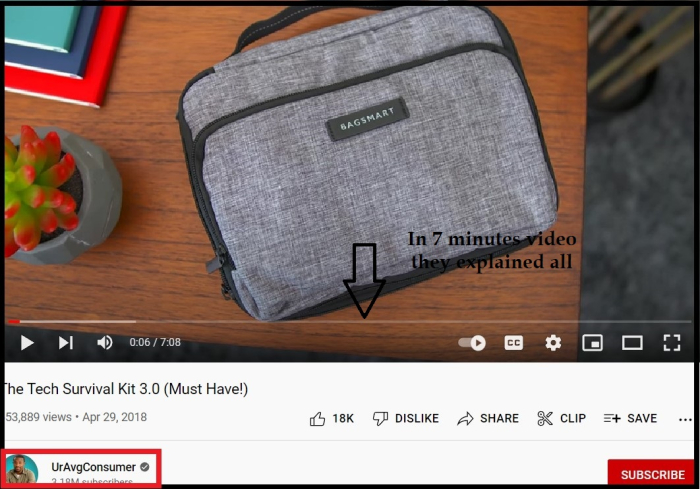
 Data Structure
Data Structure Networking
Networking RDBMS
RDBMS Operating System
Operating System Java
Java MS Excel
MS Excel iOS
iOS HTML
HTML CSS
CSS Android
Android Python
Python C Programming
C Programming C++
C++ C#
C# MongoDB
MongoDB MySQL
MySQL Javascript
Javascript PHP
PHP
- Selected Reading
- UPSC IAS Exams Notes
- Developer's Best Practices
- Questions and Answers
- Effective Resume Writing
- HR Interview Questions
- Computer Glossary
- Who is Who
What should be the flow of your YouTube video
Good YouTube video flow is one of the biggest secrets to getting the attention a channel needs to grow. Structuring the videos helps to get many opportunities, to increase engagements and keep people watching the content. Not only formal structure is helpful but sometimes in the individual pieces, one can include humor in each video.
Video can be a powerful asset for any company to be added to any marketing strategy. But not just any video will do, the creator has to create a video that speaks to the target audience, holds the viewers' attention, and effectively communicates the brand's motto. For that reason, marketers need to know how to have a good flow that serves as a starting point for any video.

Video flow is two ideas that one incorporates in all videos.
First, it's the flow and layout of each video. This means the main structural elements like a hook, an intro, the video's content and some kind of a closing call-to-action. Adopting some kind of a formal structure helps to create videos in the least amount of time possible. Having a basic outline, the creator already knows what to be included in each video.
For example, famous YouTuber Joseph Hogue says the same three sentences in every video.

The "H.I.C.C." Video flow

The H.I.C.C. video structure is a simple and effective flow for outlining YouTube videos.
H- Hook
Hooks can be just anything at the start of a video that grabs attention. The hook is one sentence that grabs the audience's attention. It's the very first sentence of the video and is designed to shock, amaze, perplex or just excite the viewer. This could be a statistic, a question or an interesting statement.
Plan the First 15 Seconds of the video. Today's video viewers are very particular; that is how a video grabs their attention in the first five seconds. If a creator wants to keep viewers hanging around them make a good start.

For example, the first few seconds of the video from "Wealth Hacker - Jeff Rose" definitely grabs the viewers' attention:

I=Intro
Now that a creator has hooked his viewers, it's time to introduce the topic. Summarize what the video will cover, show an example, tease something, and show viewers what's coming up.
So, jot down a handful of key points that are important for the video before you shoot. It's no secret that YouTube viewers are an impatient bunch, they do not have plenty of time to hang on the specific channel, so a video should flow quickly from point to point.
For example, the video from UrAvgConsumer highlights tech gear in just over 7 minutes. It's a great example of a fast-paced video that tends to work well.

C=Content
This is the main content of the video. For example, the how-to video is the steps someone needs to follow. For a yoga video, it is about how to do yoga.
Just as the overall video has a formal structure to organize it and give it a flow, the content section of the video has its structure. The flow of content can be:
Explain problem
Relate the problem to the solution
Describe your solution
Prove how your solution will work or help the viewer through a personal story
Tips and strategies
Summarize what you talked about
why it's important
Make good content following the above structure. Good content is original, solution-oriented, gives tips and interactive. It's properly sourced, unique, and concise. Craft content that increases likes, and shares, and makes a creator rank well on YouTube.
C=Call to Action

Suppose the video hook, intro and content did their job of captivating the audience, and audiences watched the rest of the video, creator should use the outro to compel them to take action. A call-to-action (CTA) is what a creator wants his viewers to do for example like video, comment, subscribe, watch another video of the channel, subscribe or click on to blog. One can have multiple CTAs in a video.
Limit the CTAs and repeat the most important ones towards the end of the video. Asking too many calls-to-action for the viewer can get them overloaded, meaning none of the CTAs will stand out. Putting a CTA towards the end of the video also means that it's one of the last moments of the video that will be there in the viewer's mind.
Perfect Example following the HICC technique
The videos from Marie Forleo's channel start with a hook Marie spinning around in her chair or dancing that quickly changes to an introduction presenting the upcoming content. Marie delivers the main content with some tips and strategies. Finally, the video ends with a perfect call to action.

Conclusion
The exact structure and process a creator use for the videos are much important and the creator must be implementing them.
The strategy of hooking viewers and then building a story ending up with a call-to-action is a simple, repeatable process that makes the flow of the video easy.

